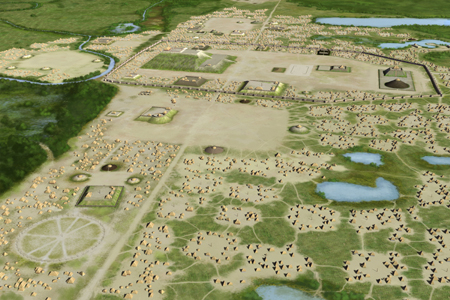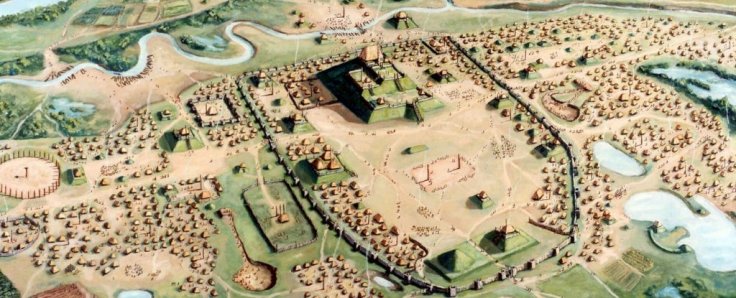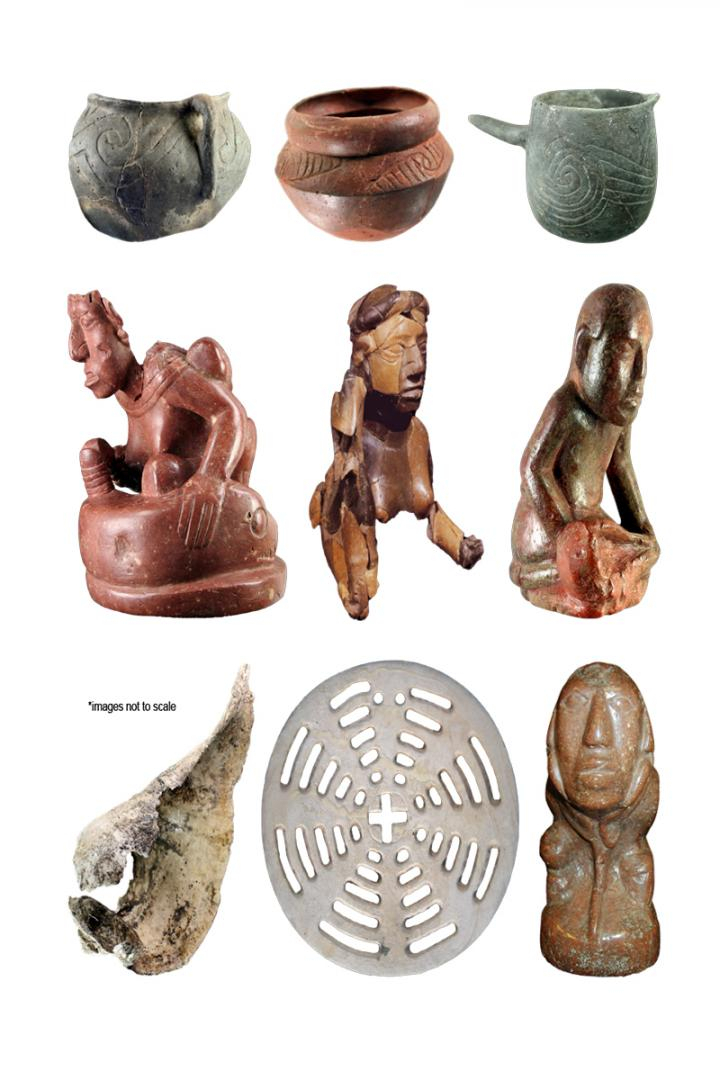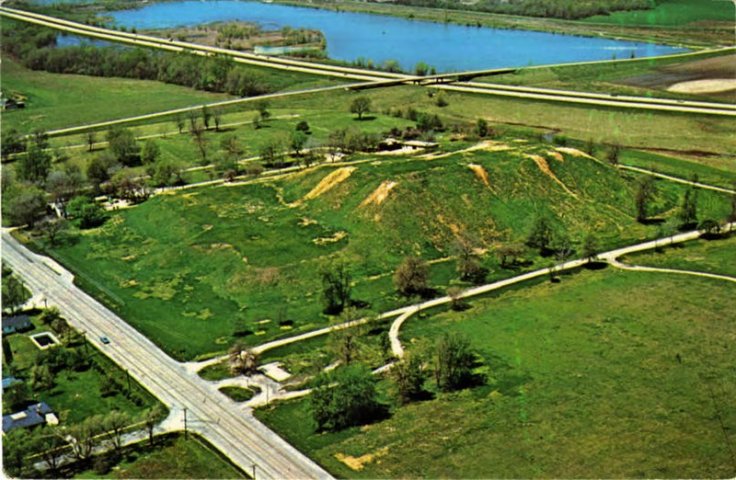Before Columbus landed on American soil, Cahokia was the biggest and most cosmopolitan city north of Mexico, situated on the banks of the Mississippi River. The forgotten city of Cahokia was the home to the Mississippian indigenous culture but what happened to this ancient civilization still remains a mystery.
Earlier it was mentioned that by 1350 the native inhabitants of the ancient city, tens of thousands of the Mississippians disappeared, leaving behind mere the giant earthen mounds, which are spread over 13 square kilometers. Its disappearance remains as mysterious as another similar disappearance of the great Indus Vally civilization on the opposite side of the globe in the Indian subcontinent, where the inhabitants of Harappa and Mohenjo-Daro abandoned their domicile. However, now a new analysis of ancient human faeces has revealed a different story.
Cahokia civilization about four centuries before Columbus stumbled on to the western hemisphere, Cahokia was in its prime and was a thriving pre-American city with a population similar to London's. At that time, located in southern Illinois, eight miles from present-day St Louis, Cahokia was built by the Mississippians, a group of Native Americans, who occupied much of the present-day south-eastern US, from the Mississippi River to the shores of the Atlantic.
It was a planned city like Harappa
As per Thomas Emerson, professor of anthropology at the University of Illinois, in 1000 AD, a city was "laid on a specific plan. It doesn't grow into a plan, it starts as a plan. And they created the most massive earthen mound in North America. Where does that come from?"
It should be mentioned that mixed people made Cahokia more like an ancient Manhattan. Earlier, when archaeologists carried out strontium tests on the teeth of buried remains, they found a third of the population was not from Cahokia, but somewhere else, revealed Emerson, who is director of the Illinois State Archaeological Survey.
The residents of the ancient city farmed, traded and hunted. These early urban planners' also hand-built earthen mounds, one of which was 100 feet tall. But the inhabitants abandoned the city by 1350. As per the earlier researchers, neither war or disease, nor the European conquest forced the residents to leave the ancient Cahokia city.

New revelation on Lost Civilization of Cahokia
This new study was published in American Antiquity. One of the lead researchers, AJ White, an anthropologist from the University of California Berkeley, stated that "The story of Cahokia was a lot more complex than, 'Goodbye, Native Americans. Hello, Europeans,' and our study uses innovative and unusual evidence to show that."
Cahokia rose abruptly starting in AD 1050 and was abandoned almost as abruptly 250 years later. Its failure offers more of a mystery than its origins. Over the years, the archaeologists mentioned several possibilities behind the abandonment such as conflict, population movement, flooding, drought, climate change and over-exploitation of resources. This widespread abandonment is called "vacant quarter."
In this case, White said that some people would think that the Cahokia city was a ghost town at the time of European conquest, based on the archaeological record, but their study was able to "Piece together a Native American presence in the area that endured for centuries." The team of researchers accumulated historical, climatic and ecological data and decided to supplement their work with faecal evidence.

It should be noted that molecular signatures in human faeces called stanols can be washed into the lakes and other basins during rain, which suggests that more stanols will be found in ancient sediments, the more people who likely lived nearby.
Later, archaeologists dug up two sediment cores from opposite sides of Horseshoe Lake, located near Cahokia's mound in the state of Illinois. Further research revealed that after hitting a low point, the population in this area began to resurge again in 1500 CE.

The authors of this recent study wrote: "The depopulation of Cahokia in the 12th to 14th centuries was not the end of an indigenous presence in the Horseshoe Lake watershed, despite a lack of archaeological evidence and research emphasis on Mississippian occupations." In addition, they also mentioned that by acknowledging a re-population following the Mississippian decline, the researchers move closer to a narrative of native persistence over disappearance.
As mentioned by the experts, when US, Canada and the Caribbean were facing a serious population decline due to violence and foreign diseases spread by European colonists, the inhabitants of Cahokia had safeguarded themselves for a time being but not forever.

Cahokia vs Indus: Mysterious Decline of Civilizations
Similarly, Indus Valley civilization, believed to be the oldest civilization in the world, had its decline untraceable in the 2nd century BC leaving behind a mystery for archaeologists all over the world.
The sudden abandonment of the ancient Indus civilization, according to a recent research by IIT Kharagpur and other research entities, the decline of Indus Civilization was attributed to climate change, especially the disappearance of the ancient Saraswati river, which is a salt marsh in the Thar Desert now.









